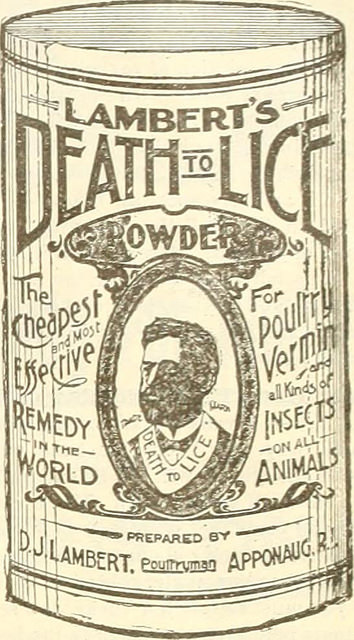Depending on where you live in the country, your flock can be affected by a variety of pests. These include mites, lice, assorted fleas and ticks. Most people do not think of these as predators. How could something so tiny do so much damage? Well, in fact, it is important to stay on top of their populations as you would for your dogs or cats in regards to fleas and ticks. If the pest’s population surges your chickens can become ill and even anemic. If the pest populations soars the flock can even stop laying eggs and perish.
Pests are always around. In the Northeast, their populations tend to be at the height during the latter half of the summer and as temperatures begin to drop in the fall. The insects are smart. They too would like to survive the winter in the coop or on the chickens or both.
Mites: There are 2 types of mites that prey on chickens in the United States. These include the Northern Fowl Mite and the Chicken Mite. These mites live in the nooks and crannies of the coop, on the roosts and in the nesting boxes. They are nocturnal so often they go unnoticed. Both survive on the blood of the chicken. They can even survive without a host for months. Mites can be prevented by doing a regular deep cleaning of the chicken coop. Natural prevention and treatment items include food grade diatomaceous earth, dust bathing, adding garlic cloves to the drinking water and herbs. There are also plenty of commercial products. Some have egg withdrawal periods. For a complete list and more details click here.

Photo Credit: Probably one of the first commercially available products to treat poultry lice and vermin.
Poultry Lice: One of the most important things to remember is that poultry lice do not affect people. However they can harm your flock. Poultry lice are active during the day and live on your chickens. They have small flat brown bodies, round heads and mouths that chew. They do not suck blood. Poultry lice are most often found around the vent but they can live under the wings and on the head. They lay clusters of eggs at the base of the feathers where they meet the skin. It is often the eggs that are the first discovery that let you know that your flock has poultry lice. Other signs are irritated and raw skin around the vent and feathers that appear to have been chewed. Natural treatments do exist and those include poultry protector, food grade diatomaceous earth and deep cleaning of the coop. It is important that you repeat the deep cleaning 2 weeks later to break the life cycle of the lice. Dust bathing helps as well. Permethrin is a commercially available topical treatment but there is an egg withdrawal period. Sevin garden dust is no longer recommended as it is a carcinogen (causes cancer). For more information, click here.

Photo Credit: A clean coop is often the key to preventing poultry pests from taking up residence.
Fleas: Several types of fleas affect poultry. These include the European chicken flea, the Western chicken flea (aka Black Hen Flea), and the Sticktight flea. The European chicken flea is found throughout the entire US and is the most popular. The Western Chicken Flea is found in the Pacfic Northwest and lives in the chicken droppings. The Sticktight flea attaches to the head and the vent area. It can clusters around the eyes and lead to blindness if the infestation is severe. It also thrives in sandy litter conditions. Keeping a clean coop and getting in the habit of regular cleanings can help prevent and treat infestations. For more information and specific treatments available for each type of flea (They are flea specific.) click here.
Ticks: Chickens, especially guinea hens, are great at eradicating ticks from your natural surroundings and yard. Sometimes ticks can latch onto your chickens. One way to address the tick population is to keep your grass mowed. Food grade diatomaceous earth, garlic cloves added to the water, herbs and other commercial products are available. For more reading, click here.
It’s a good idea to regularly check the bodies of your flock for these assorted pests. Simply pick up your chickens and check the vent first. Gently blow on the feathers or spread them with your fingers. Look at the base of the feathers for eggs and also for quick moving tiny little bugs. Regular inspections like this are a simple and easy way to asses your flock. Lastly, remember that the products you use on your flock, even topical, can get into their bodies and ultimately their eggs. Always try to use the product that treats the issues and are the safest. Also, if a product is not specifically marketing for use with chickens than the safety of that product cannot be guaranteed.
Photos used under the Creative Commons licensing agreement.













